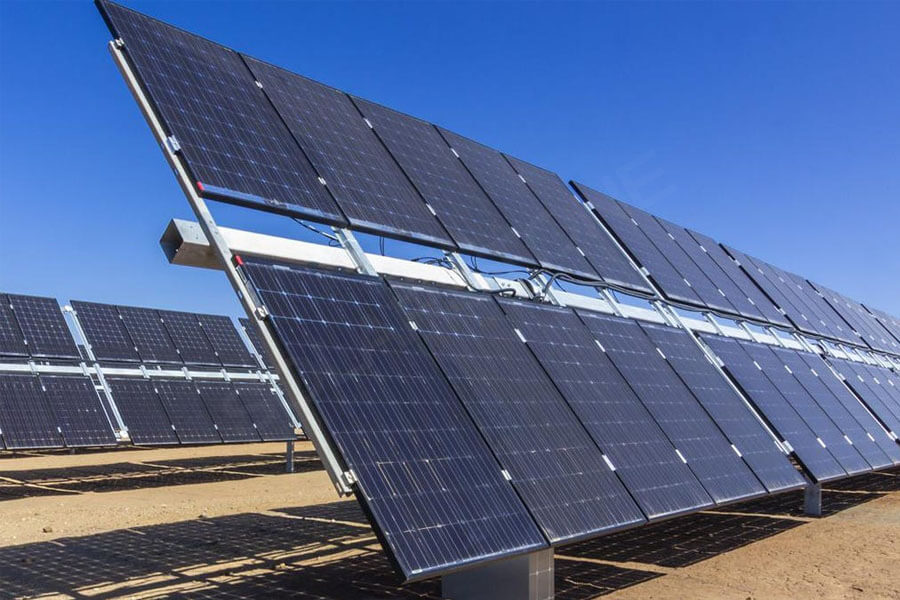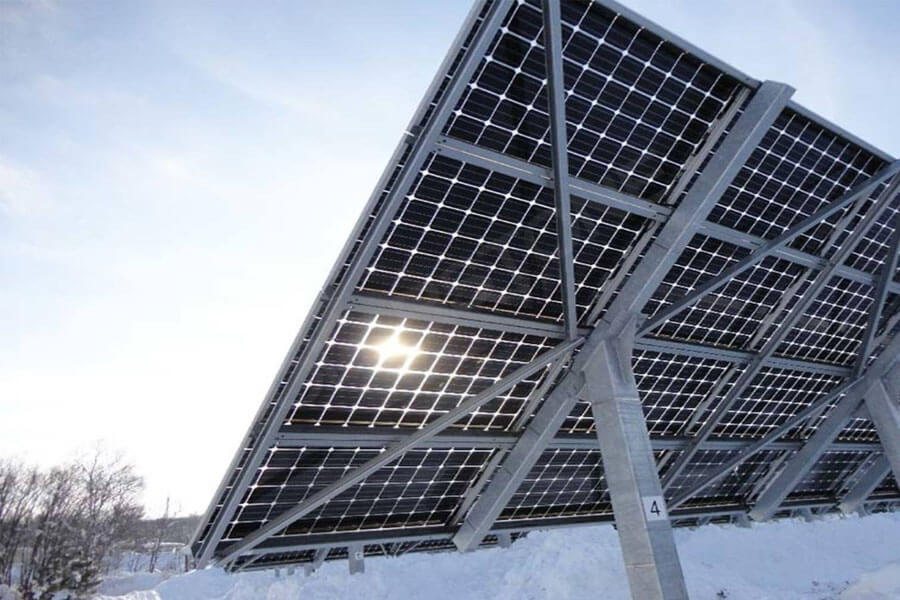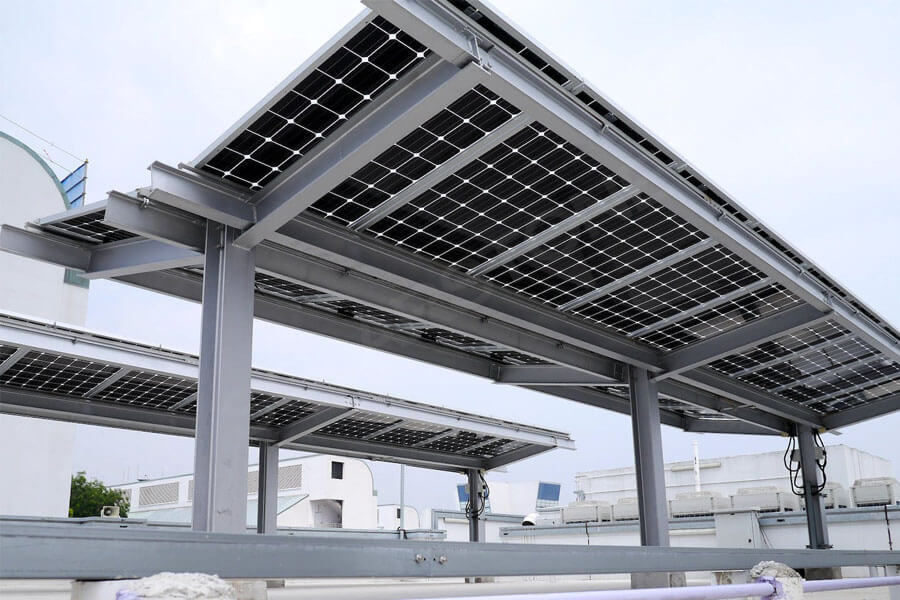Compared with traditional solar panels, there is a kind of solar panel that can provide up to 50% solar energy. This is the double-sided solar panel we are going to introduce in this issue. Some insiders predict that the double-sided solar panel market will grow ten times in the next four years, mainly because the production cost is becoming more and more competitive compared with the industry standard single-sided solar panels.
What is a double-sided solar panel?
The double-sided solar panel is a double-sided energy plant that converts sunlight into electricity at its top and bottom.
They are different from single-sided solar panels that use only one side for solar production. The word double-sided comes from the prefixes “bi -” (meaning two) and “facial” (representing face).
The double-sided solar panel is equipped with solar cells at the top and bottom of the panel. They are usually single crystal, although polycrystals can be used. Because they are thin, similar to thin film panels, double-sided solar panels are often frameless.
The top of each solar module is covered with protective glass. The reverse side can be glass or transparent backplane. This is different from traditional solar panel systems with opaque backing.
The hardware used to mount the double-sided solar array is designed to minimize shadows. This means that there are only very narrow support rails and only corner vertical supports.
The junction box usually located on the back is smaller than the traditional solar array. As a result, it takes up less space and casts fewer shadows on the back solar cell.
Working principle
The top solar cells of the double-sided solar panel system face the sun, so they directly capture the incoming solar rays and only absorb certain wavelengths. The function of the top solar cell is similar to that of the traditional solar panel array.
The bottom solar cell absorbs the light reflected from the ground. This light is called albedo light. White or light colors reflect better than dark colors. The same effect can be achieved by painting a white or silver surface on the roof or concrete driveway below the panels. The research shows that the white surface reflects more than 80% of the albedo light.
In order to optimize the operation of the bottom side solar cell, it is preferable to use high-quality silicon in the single crystal solar cell.
Unlike a single-sided solar panel system placed in a rack parallel to a roof or other surface, the double-sided body generates more energy when it is at a different angle from the roof or the ground.
In these types of devices, there is a lot of reflection. Because sunlight reflects all objects at many different angles, double-sided solar panels can better capture more objects. They can even be produced efficiently on cloudy days, because single-sided solar cells are at a greater disadvantage.
There are other installations that take advantage of the Earth’s daily rotation relative to the sun. In order to generate two energy peaks in a day, half of the two sides of the array can tilt to the east to capture sunrise and dawn; In the second half, go west to absorb the afternoon intensity and sunset light.
Another installation alternative is to place the two sides vertically. This arrangement will have a double peak every day. During each peak period, the reflection of sunlight on the other side of the solar panel will also contribute to energy production. One advantage of a vertical system is that snow or sand blown during a weather event does not hinder its function.
Due to the glass covers on both sides of the double-sided solar panels, they are more durable than traditional solar panel systems. Therefore, in some cases, the warranty period is usually extended by 5+years.







